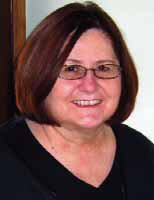
SEJ President's Report
By CAROLYN WHETZEL
As I write this column Mike Mansur is preparing his final edition of the SEJournal.
Mike is stepping down as editor of the SEJournal as part of his transition to a new job as public information officer for the Jackson County, Missouri prosecutor. Sadly, the new position means Mike must also surrender his SEJ membership.
Mike’s departure from journalism is a huge loss to SEJ and an even bigger loss to journalism.
And it’s all because of the “business” of newspapers.
In May, this Pulitzer Prize-winning reporter for The Kansas City Star became yet another senseless victim of the ongoing upheaval in the newspaper industry.
The good news, however, is that Mike's unemployment was brief.
For more than 10 years, Mike has steered the SEJournal through its quarterly publication schedule, working with a team of volunteer editors and writers to produce issues packed with articles that help environmental reporters hone their skills and broaden their depth of knowledge on a variety of topics. He also guided the publication through a massive redesign effort, taking the journal from a newsletter format to a magazine.
“Mike has years of experience on the environment beat, and it showed,” Robert McClure, the SEJ Board’s liaison to the journal editorial board, said. “He came up with winning story ideas over and over. He kept the journal fresh on environmental topics while also using the journal to instill a healthy respect for the fundamental skills of environmental journalism.”
“We are extremely sad to see him go,” McClure added. “But he leaves behind a legacy of outstanding stories in the service of environmental journalists, a repackaged SEJournal that’s one of the best-looking J-mags going, and the love and respect of his co-workers both at the SEJournal and throughout the organization.”
Mike’s contributions to SEJ go well beyond his job as SEJournal editor. He was among the first to join what he called “the best journalism organization in America,” in the farewell column for the journal he wrote after wrapping up his second year as president of SEJ.
Over the years he served other volunteer roles, including co-chairing the 1996 conference in St. Louis.
“It’s hard for me to imagine SEJ without Mike Mansur,” SEJ Executive Director Beth Parke said. “He has been the lifeblood of this community from SEJ’s earliest years. Mike has done so many things over the years, he’s responsible for many an “SEJ Moment.”
“There is a reason that William Least Heat Moon dubbed Mike ‘The Reporter’ in his book River Horse,” Parke said. “Mike personified the humanity, curiosity and observant nature of The Reporter over so many years ... I always thought that Mike’s alternative calling, if he were to leave journalism, should be to become a judge. I always recognized in him such a native talent for the reasoned weighing of evidence and measured, thoughtful response, whatever the topic.
“Journalism’s loss is the Jackson County prosecutor’s gain,” Parke said.
Thank you Mike for all you have done for SEJ. Mike, it is members like you who make SEJ “the best journalism organization in America.”
Creative Thinking
Staying “the best” j-organization means taking stock of SEJ’s programs and services to ensure they are meeting the needs of members and other journalists.
So, I’m calling 2011 the year of creative thinking for SEJ.
Over the next few months, SEJ plans on taking a close look at its popular roster of programs, publications, and services to determine which are most highly valued. It also wants to identify new opportunities to serve journalists.
The effort is the first step in a data-gathering project that SEJ hopes to launch. It will be designed to help the organization adapt to the rapidly changing news industry as well as funding challenges.
Some of the questions/issues we want to consider include:
Should SEJ continue to concentrate on the Fund for Environmental Journalism, the mini-grant program that underwrites travel and other hard costs of reporting?
Should SEJ get involved in Webinars? What is SEJ’s best social media strategy? And should SEJ help members learn to use new data, crowd-sourcing, crowd-funding, and multimedia tools?
SEJ wants to use the information to refine its focus, so that it can apportion its limited resources most effectively, as well as developing new ideas that provide the greatest potential for increasing the quality and reach of environmental news reporting.
As always, SEJ wants to hear from its members on how to improve our programs and services, so feel free to email or call with suggestions.
Carolyn Whetzel covers environment issues in California for BNA Inc.
From the quarterly newsletter SEJournal, Fall 2011 issue.












 Advertisement
Advertisement 



